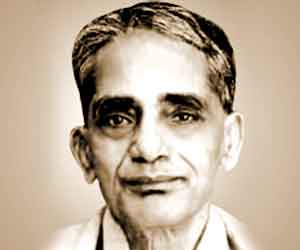Ganjam District derived its name from the word “Ganj–i–am” which means the “Granary of world”. From other sources it also revels that Ganjam District is named after the Old Township and European fort of Ganjam situated on the northern bank of river Rushikulya, which was the headquarter of the District.

Jaugada, Ganjam
The rock edicts of King Ashoka and the inscriptions clearly indicates that the present tract of Ganjam was a part of the Kalinga Empire, which was under the jurisdiction of King Ashoka. However after the disappearances of the Mauryan empire and the downfall of their absolute supremacy, the Ganjam region was also disappeared from the political scenario of Odisha and was in a dark oblivion till in 1761, it was recognised as The French Bussy.When the French arrived Ganjam District was sub divided into several parts.
But the French were not destined to be at the helm of the administration of the Ganjam District for long and shortly the English envaded the French settlement in Deccan and finally became victorious in 1759. In 1794, with the establishment of the Collector office, the historical era of the British imperialism was set up in Ganjam.

Biswanath Dash
From the historical documents of Ganjam District, it has been deciphered that the headquarter of the District has undergone several changes and has been shifted from one place to another. In 1855, the original headquarter of Ganjam was abandoned owing to the eruption of the epidemic fever in the town for which near about 80 percent of the population of the town was reduced. Temporarily the capital was shifted to Gopalpur and then to the Berhampur and finally to Chhatrapur around 1902.The District of Ganjam was far away from the Madras Presidency and the British didn’t find it easy to control the administrative activities far from Madras. Hence they merged it with Province of Odisha in 1936.
V.V.Giri, Biswanath Dash, Binayak Acharya, Kabi Samrat Upendra Bhanja, Sasi Bhusan Rath, Kabi Suriya Baladev Rath, Kalinga Bira Biju Patnaik, Raja Bahadur Ramchandra Mardraj Deo, Chakra Bisoyi and Padmasri Bhagban Sahu are some of the prominent personalities of Ganjam District.
Ganjam District has witnessed many historical events and monuments from its past. Jaugada fort stands as the symbol of all the historical heritage connected with the Rushikulya Valley civilisation. Athagadapatna is the birth place of famous Odia poets Kabisurya Baladev Rath and Kabi Jadumani Mahaptra.
Ancient Ganjam –
The Ganjam area was a part of ancient Kalinga empire which was occupied by King Ashoka in 261 B.C During this period it was the main route of South and East for shipping. Its huge number of black elephants attracted king Ashok for invading Kalinga.
Mediaeval Ganjam-
The district was named after the old township and European fort of Ganjam situated on the northern bank of river Rushikulya, which was the headquarter of the district. In 1757 it was French Commander Bussy, who marched into Ganjam and realized areas of tribute from feudal chiefs. It was the English who ultimately defeated the French in the Deccan and annexed Ganjam in 1759.
Modern Ganjam-
The modern Ganjam carved out of the Vizag district of Madras Presidency and came into existence on 31.03.1936. Ganjam district separated from Madras Presidency and formed a part of the newly created state of Odisha with effect from 1.4.1936. The re-organized district comprises the whole of Ghumusar, Chatrapur and Baliguda divisions, part of old Berhampur taluk, part of old Ichhapur taluk, part of Parlakhemundi plains and the whole of Parlakhemundi agency area in the old Chicacola division.
Recent Ganjam-
In the year 1992, after reorganization of districts by Government of Odisha, the 7 blocks of Parlakhemundi subdivision were separated and the new district of Gajapati formed and 3 subdivisions, 22 blocks, and 18 urban areas remain in Ganjam district.








